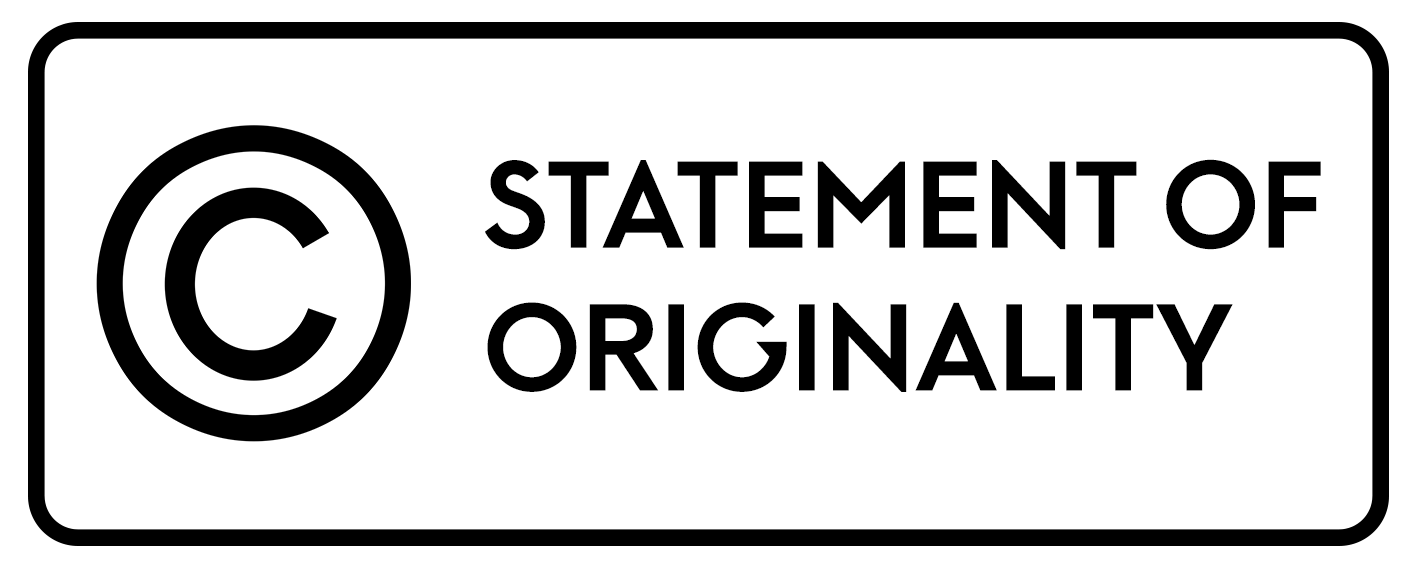Post Human and Female Cyborg in The Perfect Wife Novel By J.P. Delaney
Abstract
This study aims to reveal the situation of post human and the description of female cyborg in JP Delaney's novel The Perfect Wife, it also explains how the relationship between humans and cyborgs in this novel. The theory of cyborgism by Donna Harraway is applied to analyze the representation of post humanism as articulated through a female cyborg character. In addition, it is worth-studied as the female cyborg character is positioned in the context of husband-wife marriage. However, this study focuses on two descrition of the female cyborg who is predominantly influenced by typical gender stereotyping.
Qualitative research is taken as the approach of this study. Data collection is mostly obtained by close reading technique, while the data analysis is done by applying the theory to analyze the texts taken from author’s narration and characters’ utterances within the novel. The results of this study confirm that the female cyborg character is created by a human has a great potential to replace the role of a human being physically, intellectually and abilities, and the relationship that occurs between cyborgs and humans. It also affirms that the female cyborg presented in the novel is created to satisfy man’s need and characterized to possess typical and stereotypical woman.
Keywords
Full Text:
PDF (BAHASA INGGRIS)References
Delaney, J. P. (2020). The Perfect Wife. London: Quercus.
Denzin, N. and Lincoln, Y. (2000) The Discipline and Practice of Qualitative Research. In: Denzin, N.K. and Lincoln, Y.S., Eds., Handbook of Qualitative Research, Sage. Thousand Oaks.
Evans, Carrie L.(2016). Women of the Future: Gender, Technology, and Cyborgs in Frank Herbert’s Dune. Laval University Canada
Graham, E. L. (2002). Representations of the post/human: aliens and others in popular culture. Manchester: Manchester University Press.
Giddings, S. (2016). Cyborg. University of Southampton, UK.
Haraway,D. (1990-1991). A manifesto for cyborgs: Science, technology, and socialist feminism in the 1980s. In L. J. Nicholson (Ed.), Feminism/postmodernism. London, UK: Routledge.
Latour, Bruno. (1993). We Have Never Been Modern. Cambridge; Massachusetts: Harvard University Press.
Parrinder, P. (1979). Science Fiction: A Critical Guide. New York: Longman.
Pullman, P. (2000). Amber Spyglass. Gosford, NSW: Scholastic Ltd.
Schroeder, R. (1994). Cyberculture, cyborg post-modernism and the sociology of virtual reality technologies. Butterworth-Heinemann Ltd.
Schatzki, T.R.(2001). Introduction: Practice theory, in The Practice Turn in Contemporary Theory eds. Theodore R.Schatzki, Karin Knorr Cetina & Eike Von Savigny.
DOI: http://dx.doi.org/10.30872/calls.v8i2.7301
Copyright (c) 2022 Zakiyatul Mufidah

This work is licensed under a Creative Commons Attribution-ShareAlike 4.0 International License.
Editorial address:
Fakultas Ilmu Budaya, Universitas Mulawarman
Address: Jl. Ki Hajar Dewantara, Gunung Kelua, Kec. Samarinda Ulu, Kota Samarinda, Kalimantan Timur, Indonesia 75123
Email: jurnalcalls@fib.unmul.ac.id
Website: http://e-journals.unmul.ac.id/index.php/CALLS

CaLLs: Journal of Culture, Arts, Literature, and Linguistics site is licensed under a Creative Commons Attribution-ShareAlike 4.0 International License
CaLLs: Journal of Culture, Arts, Literature, and Linguistics indexing by:














